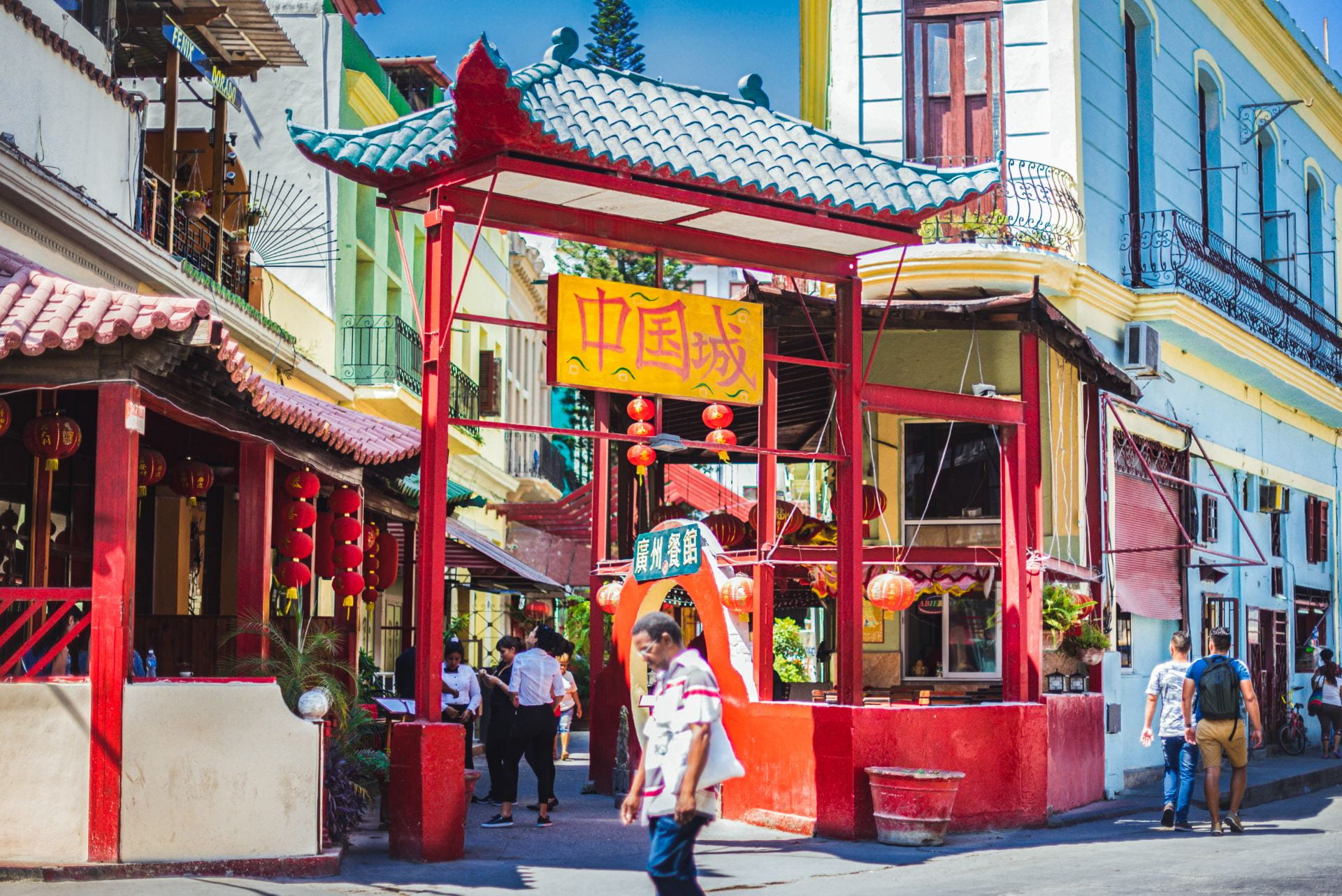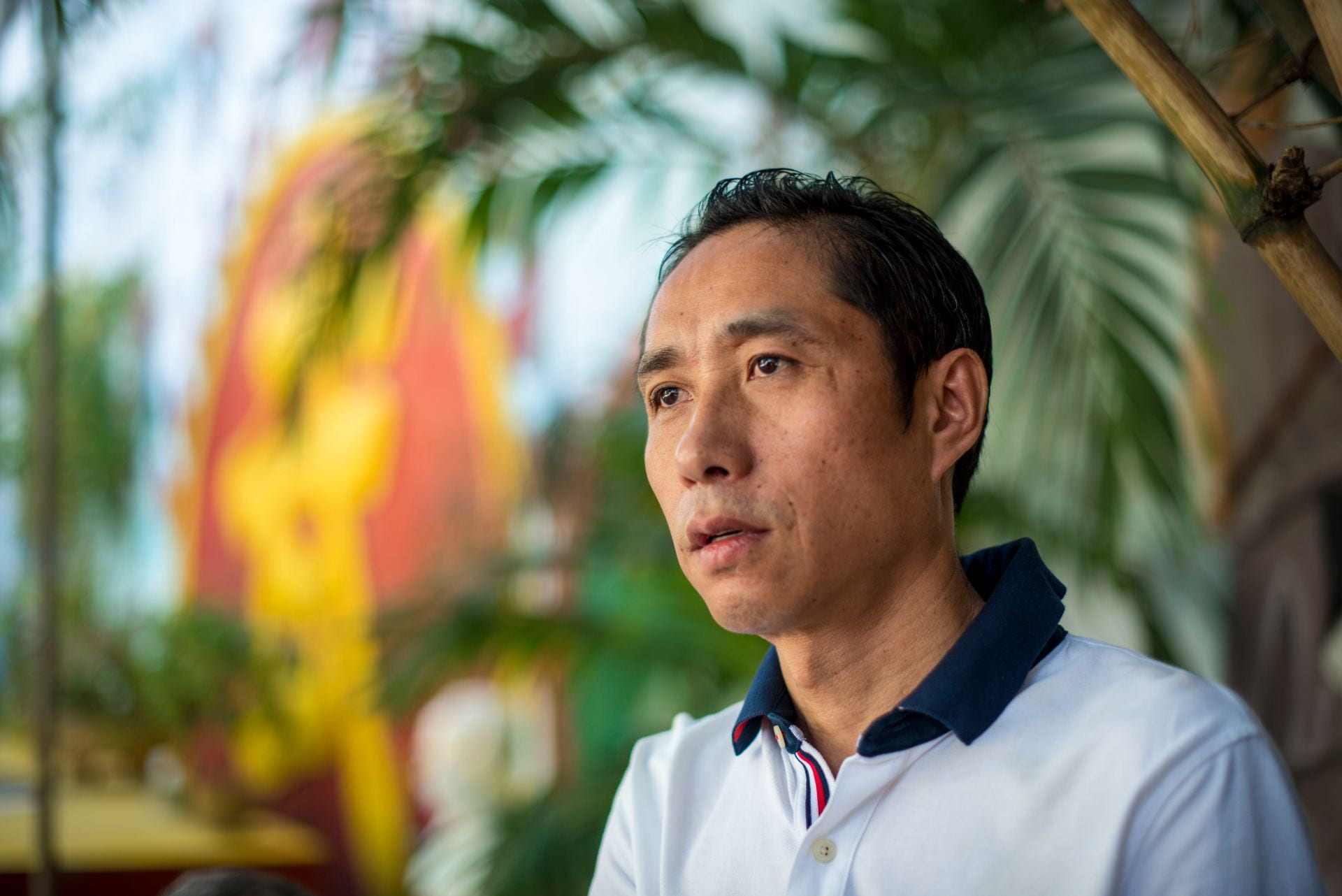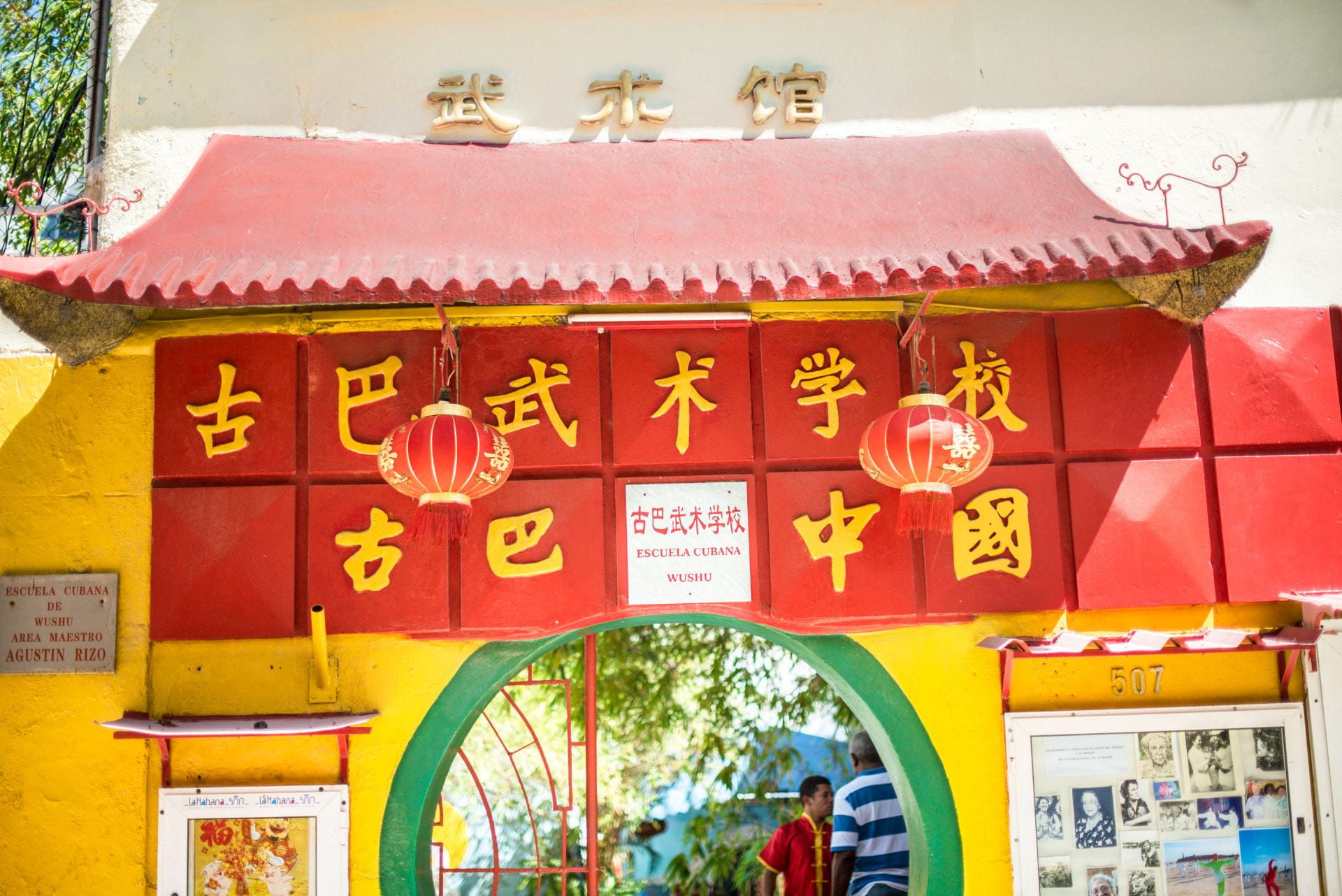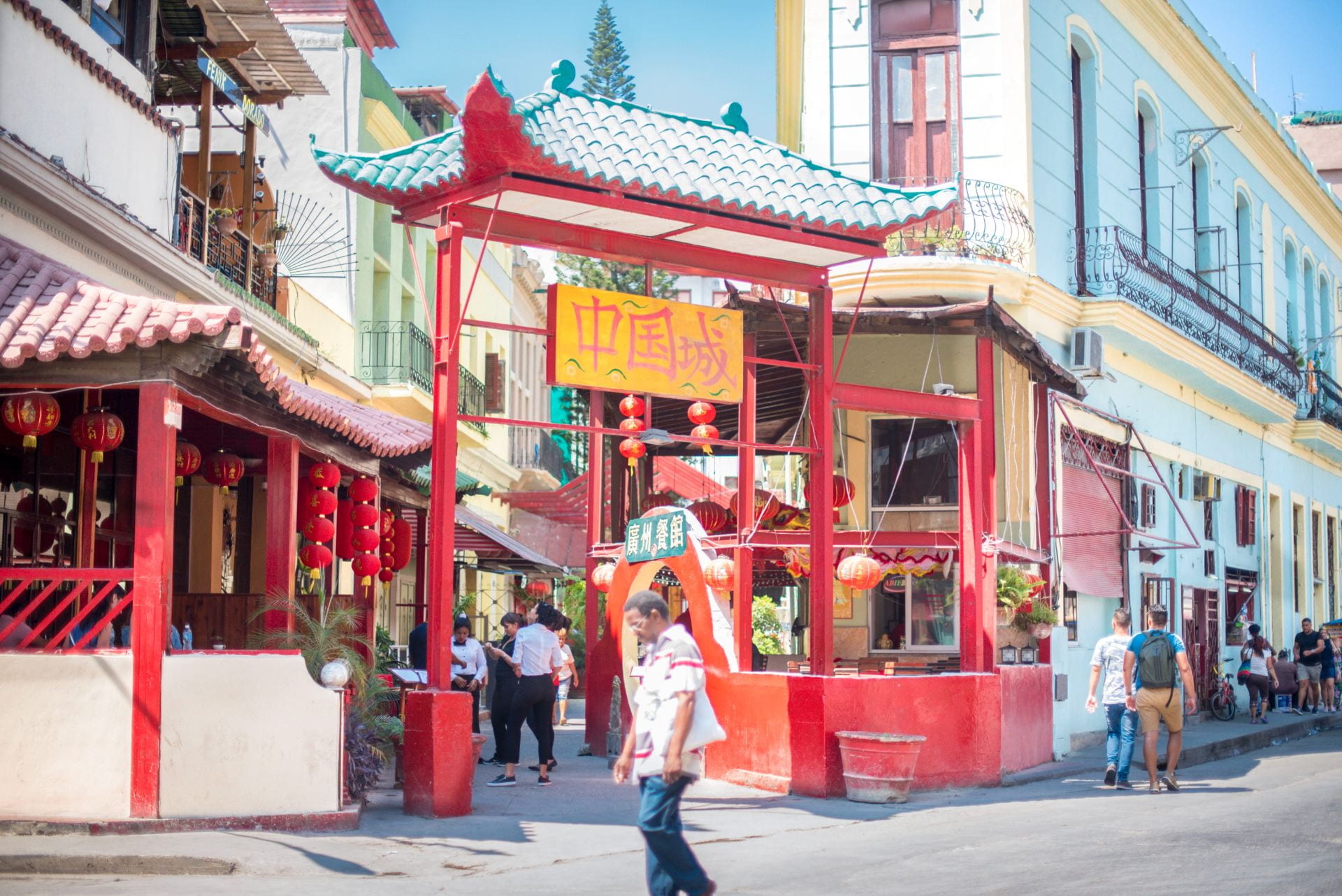Even after most have left, an effort to keep Chinatown alive

HAVANA, Cuba— Shugui Luo sits underneath the moderate spring sun, scanning passersby from the porch of Tien Tan, the local Chinese restaurant he works for, located on the vibrant Cuchillo street in the heart of the city’s Chinatown.
One of only an estimated 70 ethnically Chinese immigrants still living within what used to be the largest Chinatown in Latin America, Luo, 50, lives in Havana with a Cuban wife and a 12-year-old son.

While his coworkers cleaned the floors and prepared for the day’s open, he said many of the ethnically Chinese people who historically filled the streets nearby left after Fidel Castro’s 1959 armed Revolution stripped them of their wealth and private businesses.
“Most of Chinese people that made up the Chinatown left Cuba in the 1950s because of the Revolution,” said Luo, a 50-year-old Shanghai native who immigrated to Havana in 1998. “Most of the Chinese here are Chinese-Cuban, not originally Chinese people.”
Tucked behind the National Capitol building in central Havana stands a large traditional Chinese gate known as a paifang, adorned with golden rooftop designs and the words Barrio Chino, or Chinatown, written at its center. Through this door is a gateway to the past – to the remains of what was once the vibrant home to “a small but powerful community of more than 100,000 Chinese people,” said Evelyn Hu-DeHart, a Brown University history professor who specializes in the Chinese who live in Cuba.
Now, more than a century after its inception, locals describe Chinatown as a symbol of Chinese history in Cuba rather than as a Chinese inhabited neighborhood. Most Chinese-Cubans who make up the majority of the neighborhood can’t speak their ancestral languages of Mandarin or Cantonese.
Yet despite this lack of ethnically Chinese residents, there is an active movement to combat fading Chinese tradition and encourage mainland tourism by teaching the language, culture and history, as well as preserving the neighborhood itself. For example, President Miguel Díaz-Canel’s late-2018 announcement of sweeping renovations to Chinatown’s decaying public infrastructure is under way. And enrollment at the Confucius Institute, a Chinese state-owned language school, nearly doubled from 500 students in 2015 to 950 students in 2018.
“The Cuban government has realized that Chinatown everywhere, like in America, can be big tourist attractions,” Hu-DeHart said. “They think this urban renewal will bring a small economic boom for those who are still in the area.”
‘A powerful little community’

The first traces of Chinese presence in Cuba date back to the mid-19th century when 125,000 majority-male indentured servants came between 1847-1874 to work eight-year contracts on the sugar plantations. Hu-DeHart said the vast majority of them stayed after their contracts ended. They married local Cubans and became an active collective of voices within the country’s dialogue, especially when 2,000 Chinese workers fought in the Cuban War of Independence.
When China allowed its citizens to freely immigrate in 1927, Hu-DeHart estimates another 20,000 Chinese people left for Cuba between then and the 1950s, the earlier groups in search of better economic opportunities and the later groups to escape the newly established Communist Republic of China. These two waves of immigrants built the 40-block Chinatown into a thriving mini metropolis.
“They became a powerful little community,” Hu-Dehart said. “They were mostly what I’d call shopkeepers or small businessmen. You have to just imagine those streets were teeming with Chinese. The streets were lined with Chinese businesses and restaurants. All of that used to be the Barrio Chino, the Chinatown that used to be so vibrant.”
Shortly after Castro took power, he implemented a Communist government, leading to the first major exodus of the island’s residents, including the Chinese. Like other Cubans, Hu-DeHart said many of the Chinese settled in Miami and New York City. Due to a lack of population tracking during this time, it’s unclear exactly how many Chinese residents remained after 1960, but Hu-DeHart affirmed most of them left.
The Sino-Cuban future

Just one block over from Tien Tan, through a traditional Chinese moon gate, lies an open courtyard decorated with Chinese calligraphy and paintings. Here, 11 times a week, locals of all ethnicities gather for Wushu, or Chinese martial arts lessons, led by the school’s master, Roberto Vargas Lee, and longtime students.
To the right of the courtyard, Lee, a third-generation Chinese-Cuban, walks past numerous walls filled with photos of him and well-known Cuban government officials, such as the Castro brothers and Díaz-Canel. Lee is seen as a local community leader. He believes Chinese culture needs preservation, and said he was proactive in bringing about the renovations to Chinatown.
“It’s the legacy they left here that’s so important,” said Lee, 53. “I played an important role because of my good relationship with the Cuban government. They’re compelled to help us with these social projects. The government relies on me for the development of Chinese culture within the greater Cuban culture because that helps with medicine, education and even economic ties with China.”
As Luo scrolls through Facebook photos of his son, he sighs. He said his son, like most Chinese-Cubans, are disconnected from their culture. But because of the growth of the Confucius Institute and its Cuban sister organization, Casa de Artes y Tradiciones Chinas, he sees an outlet for Chinese-Cubans to reconnect with what once was.
Just a few blocks over from the Confucius Institute, Milagros Santos, who works as a facility attendant at Casa de Artes y Tradiciones Chinas, agreed with Luo. She said the variety of workshops and classes offered at the institutions allow students to participate in their heritage “just as their ancestors once did.”
The organizations work together with the University of Havana and divide the curriculum into two parts: cultural practices and language. These classes are primarily taught by Chinese teachers hired and assigned by the Chinese government.
“We concentrate mostly on art, like Chinese calligraphy, medicine and cooking through three-month long workshops,” Santos said in Spanish through a translator. “They focus more on the language and teach it through six levels.”
The tan doors of the Confucius Institute slide open a few minutes after 8 p.m. After finishing their usual two-hour biweekly class, the students file out into the cobblestone alley, conversing in mixtures of Spanish, Chinese and even English. Among them is Chereisy Diaz Rodriguez, a fourth-year student and a non-Chinese Cuban. She chose to learn the language for economic reasons, rather than cultural reasons.
“I think why I chose the language is because of our economy,” Rodriguez said. “I see a real economic future and use with the language because China is such a big partner to Cuba.”
She’s not wrong. China’s economic presence in Cuba has grown rapidly within recent years. From 2011 to 2016, Chinese products have risen from 9.2% to 22.7% of Cuba’s imports, according to Cuba’s National Office of Statistics. One of these is the blue Yutong buses that as of 2017 occupies 70% of the local market, with over 6,700 vehicles across the island. On top of that, China has been at the forefront of providing aid to Cuba. In March of 2018, the Chinese government donated $36 million U.S. dollars for public sector development.
Hu-DeHart said even Cuba’s Confucius Institute is a form of Chinese political influence, known as soft power, or persuasive relation achieved by economic or cultural means.
“There are hundreds of [similar institutes] all over the world,” Hu-DeHart said. “They work jointly with a local educational institution and they’re supposed to teach Chinese culture and language, and China sends their professors to spread a cultural influence.”
Upstairs from the Wushu courtyard in his second-story office, Lee said the renovations are not only to restore the life of the neighborhood’s infrastructure but also to encourage Chinese tourism. Chinese tourists only comprised 1% of Cuba’s tourism market in 2016, according to the most recent data from the National Office of Statistics. The government is clearly seeking to change that, said Hu-DeHart.
“They realized that Chinatown everywhere, like in America, are big tourist attractions,” she said. “They certainly aren’t doing it for the Chinese because there aren’t that many left there. They think this will be a small economic boom for those who have small Chinese restaurants in the area.”
With the windows rolled down in his blue 1950 Plymouth coupe, taxi driver Jorge Ferrara drives past the Chinatown gate. He hopes the renovations can build upon the growing relationship with China.
“Every new thing you see here is from China,” Ferrara said. “I think these renovations are for tourism and to be in good standing with the Chinese government, so that they will help us when we need it.”
Further toward the center of Chinatown, Jack Choi, a 30-year-old Chinese tourist from Hong Kong, wanders about, following his Google Maps GPS. Disappointed by the lack of Chinese presence within the neighborhood, Choi said he’s skeptical of Chinatown being a conduit for increasing tourism.
“It’s not like New York’s Chinatown,” Choi said in Chinese. “With this Chinatown, there’s no Chinese to actually see here. The Chinese will come regardless for the cars and the people, but not for this Chinatown.”
